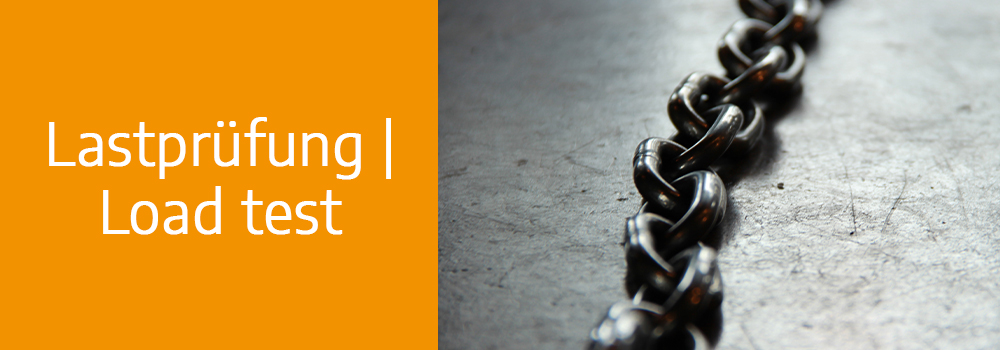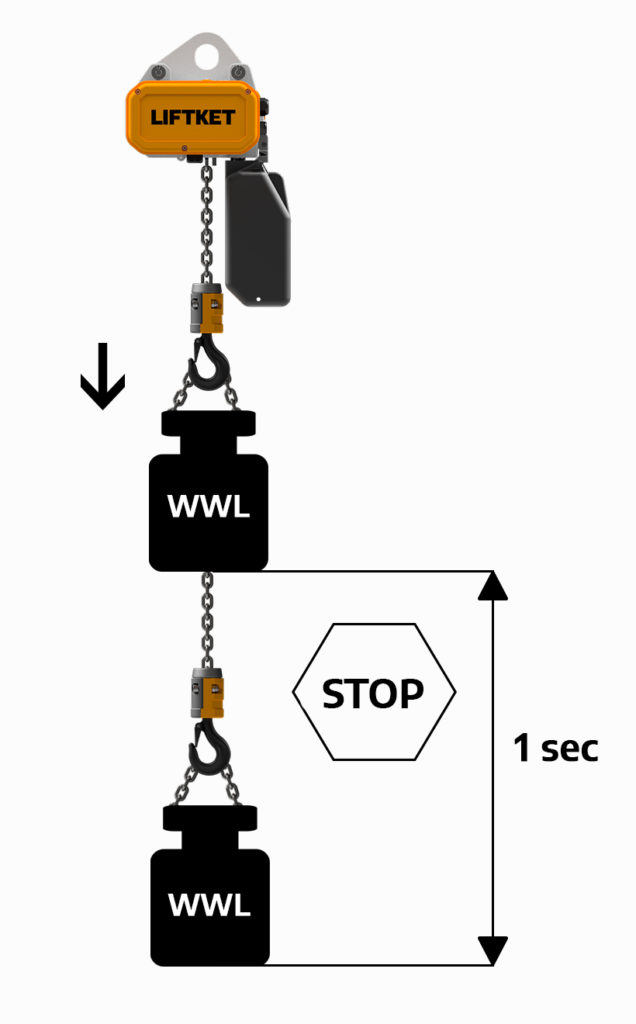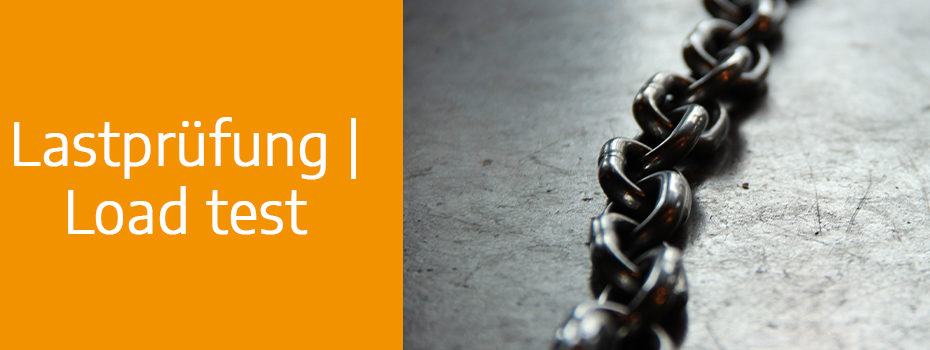
Load test – annually, at initial commissioning & after adjustment/replacement of the clutch
The annual load test as well as the load test during initial commissioning of your LIFTKET electric chain hoists is of high importance. The tests explained below comply with the accident prevention regulations V52 (cranes) and V54 (winches, lifting and pulling equipment).
Please note that local accident prevention regulations must be considered. These may be even stricter if necessary.
1) Load test during initial commissioning
This test takes place in this form only once “in the life” of the chain hoist – during initial commissioning. There is a dynamic and a static load test. The static test must be carried out with the 1.25-fold nominal load (125 %). This essentially serves to check the load-bearing structure and brake.
During the static test it may occur that the clutch of your LIFTKET electric chain hoist slips a little or that the 1.25-fold nominal load cannot be lifted. We therefore recommend not to lift the load with your LIFTKET electric chain hoist but with a forklift truck, manual chain hoist or similar. Otherwise, the clutch linings could be damaged.
During the dynamic test, the load test is carried out with the 1.1-fold nominal load (110 %). All possibilities of intended operation and all functions are also to be tested with the 1.1-fold nominal load. The dynamic test should be carried out with superimposition of the possible working movement at maximum working speed. It is important that the load movement stops within one second.
Please note that the 1.1-fold nominal load must be lifted without changing the setting of the slipping clutch!
A clutch test is not necessary during initial commissioning, as this is carried out during production at LIFTKET.
After the successful initial commissioning test, you should record the inspection date for the first repeat test by means of an inspection sticker and/or an entry in the inspection book.
2) Annual load test – repeat test
During the annual load test of your LIFTKET electric chain hoists, only the dynamic test must be carried out. When the clutch and brake are loaded with 100 % of the nominal load, the load movement must stop within one second. The electric chain hoist must be able to lift the load without slipping the clutch. The release limit of the slipping clutch is tested with the 1.6-fold nominal load. The chain hoist must (!) no longer be able to lift this load.

According to EN 14492-2, the electric chain hoist must be able to lift the 1.1-fold nominal load but must not be able to lift the 1.6-fold nominal load.
The static load test with the 1.25-fold nominal load does not have to be carried out during the annual repeat test.
If you have any questions regarding the load test of your LIFTKET electric chain hoists, please do not hesitate to contact our colleagues from the technical department at info@liftket.de .
